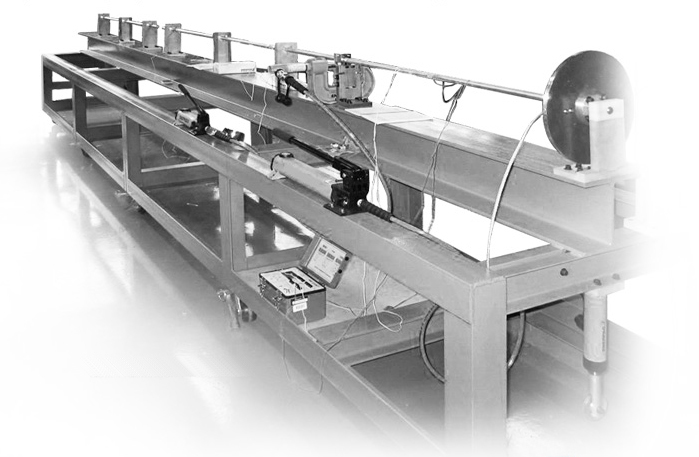#242 Split-Hopkinson Pressure Bar Apparatus
1962
First apparatus able to directly generate a complete dynamic (high-rate) stress-strain curve in a single experiment
The Southwest Research Institute Split-Hopkinson Pressure Bar apparatus is a mechanical test instrument used to characterize the dynamic response of materials at high strain rates (typical of impacts and explosions).
The apparatus, based on devices invented by Bertram Hopkinson and Herbert Kolsky, was developed at SwRI in 1962 by Dr. Ulric Lindholm. Initially created to evaluate the behavior of metals under various conditions, the SwRI Split-Hopkinson Pressure Bar has since been applied to a wide range of materials.
Notable applications include determining the dynamic strength of steel in North Sea offshore platforms subjected to impact, defining the compressive strength of ceramics used in advanced armors, evaluating pipeline and nuclear pressure vessel steels, and evaluating the strength of materials on the pressurized hulls of the U.S. Space Station under impact from meteorites or other orbital debris impact.
Today, the SwRI Split-Hopkinson Pressure Bar remains the standard test for high strain rate materials characterization.
Landmark Location
Southwest Research Institute
6220 Culebra Road/P.O Drawer 28510
San Antonio, TX 78228-0510
Phone: (210) 684-5111
Related Links
Company Website
www.swri.org
Visiting Info
The SwRI Split-Hopkinson Pressure Bar is located in the High-Rate Materials Laboratory at Southwest Research Institute. The laboratory is available for tours, but is an active research laboratory, so public access must be coordinated and scheduled in advance.
By appointment
action67@swri.org
twhelan@swri.org
Phone: (210) 522-2257
Fax: (210) 522-3547
Ceremony Notes
Designation ceremony took place at the Southwest Research Institute, San Antonio, Texas, on December 1, 2006.

